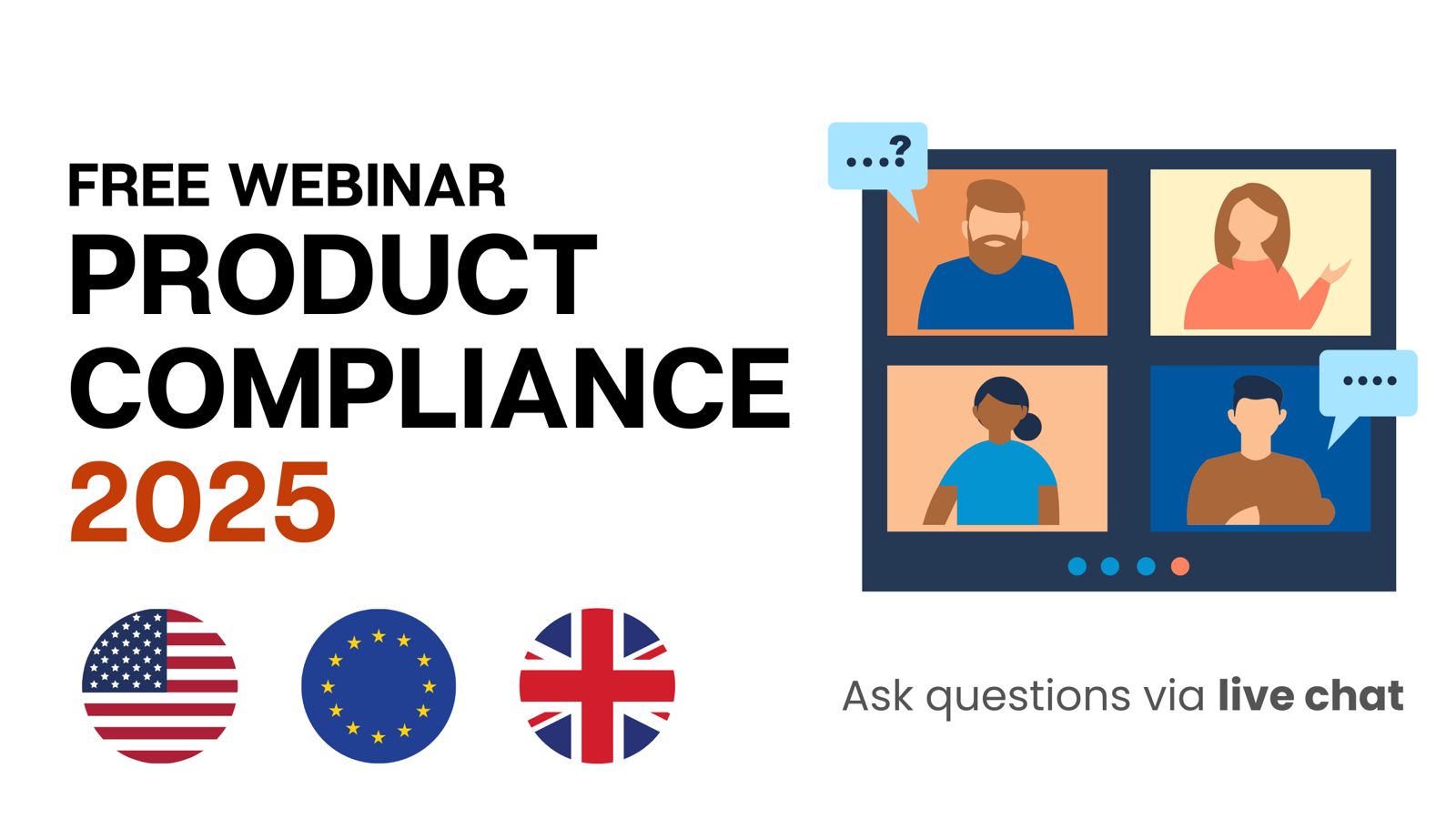
The Digital Product Passport is intended to replace the Declaration of Conformity for at least a number of product categories in the coming years. In this guide, we explain what the Digital Product Passport is, what to include, and how to obtain one – with Article 17 of the Toy Safety Regulation draft as our source.
However, keep in mind that this regulation is not final, and only relevant for toys. The exact requirements and processes will likely differ for other products.
Content Overview

FREE CONSULTATION CALL (US, EU & UK)
- Request a free 30-minute call with Ivan Malloci to learn how we can help you with:
- Find product requirements
- Certification and labeling
- Lab testing
Which products will require a Digital Product Passport?
I am not aware of any definitive list of products that will be subject to a Digital Product Passport requirement. However, it seems that the Digital Product Passport will replace the existing Declaration of Conformity – as part of the new Toy Safety Regulation. For context, issuing a Declaration of Conformity has long been a requirement under the Toy Safety Directive.
If this indicates that products that currently require a Declaration of Conformity will at some point also need a Digital Product Passport – then the following products may at some point be affected:
- Electronics
- Batteries
- Machinery
- Personal Protective Equipment
- Medical Devices
This could either change when an existing directive is replaced by a regulation, or if a directive or regulation is amended. For example, it may be the case that a future Low Voltage Regulation may include similar provisions.
What kind of information must be included in the Digital Product Passport?
Article 17 of the Toy Safety Regulation states that a Digital Product Passport must, at a minimum, include the following information:
1. Unique product identifier of the toy;
2. Name and address of the manufacturer or of the manufacturer’s authorised representative, as well as the unique operator identifier;
Comment: We could not find any exact definition of unique operator identifier – other than that this must be a unique text that relates to a certain company.
3. Name and address of the economic operator responsible for carrying out the tasks set out in Article 4 of Regulation (EU) 2019/1020, as well as the unique operator identifier;
Comment: Article 4 goes into detail about requirements for manufacturers, importers, and other entities defined as economic operators.
4. Object of the passport (identification of toy allowing traceability, including a colour image of sufficient clarity to enable the identification of the toy;
Comment: This could potentially include product name, model, batch numbers, or serial numbers.
5. The commodity code under which the toy is classified at the moment the passport is created, as set out in Council Regulation (EEC) No 2658/873;
Comment: This could refer to the CN codes that can be found here.
6. References to all Union legislation that the toy complies with;
Comment: This would, in this case, at least include the Toy Safety Regulation. However, other regulations and directives may also apply.
7. References to the relevant harmonised standards used, or references to common specifications in relation to which conformity is declared;
Comment: This refers to EN standards which are harmonised under, in this case, the Toy Safety Regulation. It is likely that EN 71 will be harmonised under this Regulation as well.
8. Where applicable: the notified body name and number which has intervened in the conformity assessment procedure and issued a certificate, as well as the reference to the certificate;
9. The CE marking;
10. A list of allergenic fragrances that are present in the toy and that are subject to specific labelling requirements as set out in Part B, point 1, of the Appendix to Annex II;
11. Any substance of concern that is present in the toy.
Comment: We could not find any list of substances of concern in the draft. It is possible that this relates to SVHCs under REACH.
Additional information
Part II also provides the following two parts as information that can be included in the Digital Product Passport:
- Safety information and warnings
- Instructions of use
Data Carrier Access
The draft also mentions that each Digital Product Passport must be accessible via a data carrier, which is defined below:
(14) ‘data carrier’ means a linear bar code symbol, a two-dimensional symbol or other automatic identification data capture medium that can be read by a device;
This will likely include GS1 barcodes, and possibly other systems such as QR codes.
The data carrier must be affixed to the product itself. As such, consumers will be able to quickly access the Digital Product Passport by scanning, for example, QR code.
This is far more transparent than the present situation. Right now, you would need to contact the original manufacturer and hope that they will respond.
The new rules would make it possible to find out which regulations and standards a product complies with within only a few seconds.
Digital Product Passport Registry
Unlike the Declaration of Conformity, information from the Digital Product Passport will need to be uploaded so that it can be accessed by market surveillance authorities and customs authorities in the European Union. By comparison, a DoC is often never submitted anywhere – unless asked for by the authorities.
Some companies sell non-compliant products for years without a DoC and are surprised when they are suddenly forced to provide one.
One possible effect is that the customs authorities will actively check that information from the Digital Product Passport has been uploaded before your goods are cleared for customs. This would be a major shift compared to how things are done today – with random checks on only a fraction of all inbound shipments.
When will the Digital Product Passport become a requirement?
So far we have only examined information related to the Digital Product Passport in the Toy Safety Regulation draft. It is possible that this will be the first regulation that will make a Digital Product Passport mandatory – at least for toys. However, we currently don’t know the date or the time frame.
How do we obtain a Digital Product Passport?
The Digital Product Passport is not obtained. Instead, it is issued by the manufacturer. Keep in mind that the definition of manufacturer also includes companies that sell toys with their own design or brand name – even if they use contract manufacturers.
Will manufacturers need to issue a Digital Product Passport?
Yes, manufacturers are obliged to issue a Digital Product Passport.
Will importers need to issue a Digital Product Passport?
No, but importers are responsible for ensuring that a Digital Product Passport for the product is registered. That said, keep in mind that importers selling products based on their design or brand are defined as manufacturers.
Where should the Digital Product Passport be stored?
The Digital Product Passport must be made available online, via a readable data carrier on the product label – possibly a QR code. The regulation draft does not mention where this file should be stored – but it may be sufficient to store it on your company website or use some sort of third party.
What format should the Digital Product Passport be?
As mentioned above, a list of required information has been provided – at least for toys. Beyond that, the draft only states that the Digital Product Passport shall be machine-readable, structured and searchable.
While we cannot know for sure now, it is possible (but not verified) that a simple PDF document will suffice.
Will the Digital Product Passport replace the Declaration of Conformity?
Yes, at least for some products.
Do Amazon sellers need a Digital Product Passport?
Yes, Amazon will require a Digital Product Passport for products subject to this requirement – if these are sold in the EU.

















Congratulations, great post.
Do you think it is possible that the document accessible via QR can be live?
I mean, for example, a ‘read-only’ Excel file stored online that the manufacturer or brand can update as soon as a new test certificate is available for the product or the manual is updated.
Which language may be required?
I would imagine that it must be static as you would need to have a Digital Product Passport valid for that specific product – and if you keep updating it, then it would over time cover newer versions of the same product, including standards.
This is just speculation from my side though.